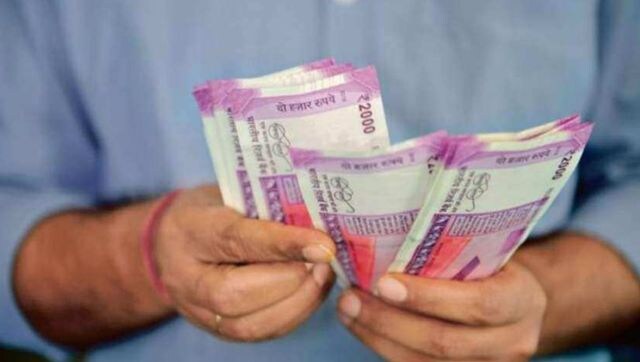RBI to launch India’s first digital rupee project: What is a CBDC and how will it work?
The Reserve Bank of India will roll out the digital rupee for the wholesale segment today as part of its pilot project. The digital rupee (CBDC) will give a big boost to the economy and positively change the banking scenario of the country

RBI defines Central Bank Digital Currency (CBDC) as a digital form of legal tender issued by a central bank. Image used for representational purposes/PTI
After months of talks and rumours swirling, the Reserve Bank of India (RBI) will roll out the digital rupee — the Central Bank Digital Currency (CBDC) — today (1 November).
Talks of a digital rupee in the country have been swirling since Finance Minister Nirmala Sitharaman announced it during her Budget 2022 speech back in February. At the time, she had said that the digital rupee would be launched in 2022-2023.
The launch is being carried out in two phases — in the first, the digital rupee (e₹) will be launched in the wholesale segment. The second phase, likely to take place in a month’s time, will see the digital rupee being launched in the retail segment in closed user-groups of customers and merchants.
According to the RBI, nine banks — State Bank of India, Bank of Baroda, Union Bank of India, HDFC Bank, ICICI Bank, Kotak Mahindra Bank, Yes Bank, IDFC First Bank and HSBC — will participate in the pilot.
Here is a look at what CBDC is and how it will work according to the RBI.
CBDC explained
The RBI explains CBDC as legal tender issued by a central bank in a digital form. “It is the same as a fiat currency and is exchangeable one-to-one with the fiat currency. Only its form is different,” writes the RBI on its website.
In simple terms, the CBDC is basically the digital version (in an electronic form) of fiat currencies, for India that would be its domestic currency rupee.
Explaining the difference between a digital rupee and using a mobile wallet, a government source was quoted as saying, “In the case of a digital rupee instead of holding a note you will be holding a digital currency in your phone and it would be with the central bank and from there it would be transferred to any merchant. It is fully backed by the sovereign.
The RBI explained that it would appear as liability (currency in circulation) on a central bank’s balance sheet.
Though the idea of a CBDC is inspired by Bitcoin, they are different from crypto assets, which do not possess ‘legal tender’ status and are not issued by the state.
Many countries have expressed interest in CBDCs; however, only a few have managed to progress beyond the pilot stage of developing their own CBDCs. As per the RBI website, a 2021 survey of central banks across the world revealed that 86 per cent were actively researching the potential of digital currency, while 60 per cent were experimenting with the technology and 14 per cent had deployed pilot projects.
How will CBDCs be beneficial?
There are multiple benefits in using a CBDC. Minister of State for Finance Pankaj Chaudhary had told Lok Sabha last year: “Introduction of CBDC has the potential to provide significant benefits, such as reduced dependency on cash, higher seigniorage due to lower transaction costs, reduced settlement risk. Introduction of CBDC would also possibly lead to a more robust, efficient, trusted, regulated and legal tender-based payments option.”
As CBDCs are in a digital form, the dependency on paper will reduce, which in turn, will be beneficial to the environment.
Another advantage of CBDCs over conventional digital transactions comes from the blockchain infrastructure, which makes CBDC payments final and instantaneous. This reduces the settlement risk, where money has gone from your account but not reached the receiver. This is of particular importance in a system in which inter-bank payments are so common — where the sender and receiver accounts are in two different banks.
The use of CBDCs could also lead to a further shift to a cashless economy. The use of CBDCs will give a boost to the government’s call for cashless payments and positively change the banking scenario.
Furthermore, as more people opt for CBDCs, it would benefit cross-border remittances. Overall, the cost of transactions would reduce for businesses and the government.
With inputs from agencies
Read all the Latest News, Trending News, Cricket News, Bollywood News,
India News and Entertainment News here. Follow us on Facebook, Twitter and Instagram.
also read

Delhi: 36-year-old held for duping man of Rs 17 lakh on pretext of investing in cryptocurrency
Police said Rs 3,84,897 was freezed in the bank accounts. Five debit cards and two cheque books of different banks were recovered from the accused

When a fugitive launches a full-page ad war in WSJ against Modi on the lines of ‘Wanted Dead Or Alive’ posters
The advertisement was put in allegedly by one Ramachandran Vishwanathan, a disgruntled would-be supplier of multimedia content via satellite in India

ITR filing deadline for 2022-23 for businesses extended till 7 November
Earlier, the last date for filing ITR by companies who are required to get their accounts audited was October 31
